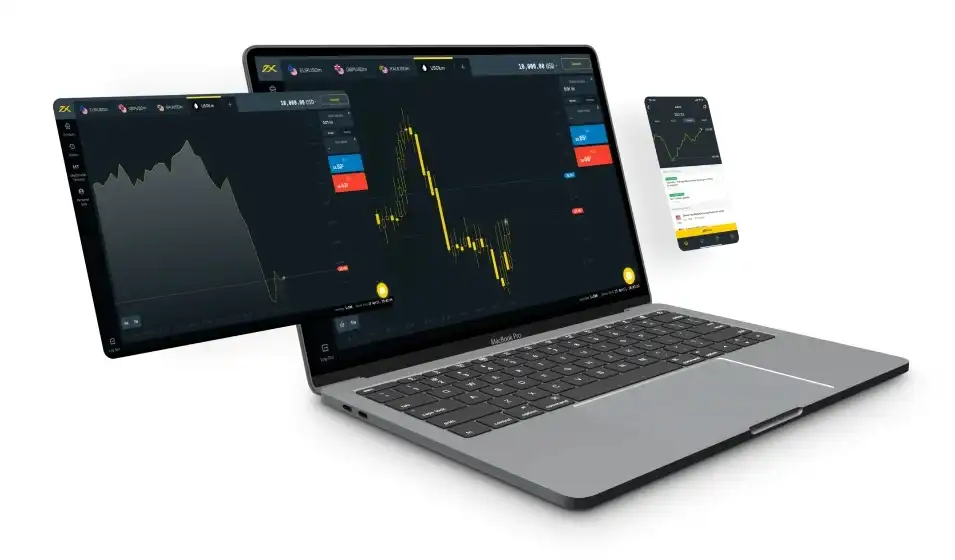Day trading requires a reliable system, fast execution, and clear data visualization. The right trading platform can make the difference between gaining insight and making rushed decisions. For newcomers, the main challenge lies in finding a setup that’s easy to handle yet equipped with the tools needed for growth. The following sections explain what makes a platform beginner-friendly and what features to prioritize before choosing one for active trading in 2025.
What Makes a Platform Beginner-Friendly
A beginner-friendly trading platform combines simplicity, learning tools, and security. The interface should allow users to navigate between charts, order books, and account summaries without confusion. Clear chart layouts, guided onboarding, and transparent fee displays help new traders stay focused on price action instead of struggling with settings.
Below are three core aspects that define beginner accessibility:
| Aspect | Description | Importance |
| Ease of Use | Menus and functions should be intuitive, reducing the time to execute trades. | Saves time and minimizes errors |
| Educational Tools | Built-in tutorials, market guides, and demo accounts for practice. | Helps understand market terms and risk handling |
| Technical Reliability | Low latency, few connection issues, and stable mobile access. | Ensures accurate order placement |
In short, a simple design doesn’t mean limited capability. Platforms that merge clean interfaces with solid charting and educational tools tend to keep new traders longer and help them progress faster.
Key Features to Look for in a Day Trading Platform
When choosing a platform for day trading, certain tools are essential for market analysis and order precision. Beginners should focus on a mix of usability and data access rather than the number of technical features alone.
- Real-Time Data and Fast Execution: Latency can turn a profitable setup into a loss. The system must execute orders instantly, with access to live price feeds and market depth.
- Customizable Charting Tools: Chart flexibility supports multiple timeframes, indicators, and overlays. Being able to create alerts directly on charts helps control entries and exits more precisely.
- Order Types and Risk Controls: A reliable system includes stop-loss, take-profit, and trailing stop functions. These automate risk management and prevent emotional decisions.
- Fees and Minimum Deposit Transparency: Low spreads and transparent commission rates are key. New traders should avoid systems with hidden withdrawal costs or complex margin rules.
- Regulation and Account Security: Platforms regulated by credible authorities (like the FCA, ASIC, or SEC) protect users’ funds and promote operational transparency.

A short comparison of critical attributes is given below:
| Feature | Importance for Beginners | Example Benefit |
| Fast Execution | High | Reduces slippage and entry delay |
| Demo Account | Essential | Allows practice without financial risk |
| Low Minimum Deposit | Moderate | Enables testing with smaller capital |
| Regulation | Very High | Provides safety and dispute resolution |
| Integrated Tutorials | Helpful | Shortens learning curve |
Best Beginner-Friendly Day Trading Platforms in 2025
The following section reviews leading options suitable for new day traders. Each platform listed below balances ease of use, reliability, and educational value while offering real-time data access for decision-making.
eToro
eToro remains one of the most beginner-oriented trading environments in 2025. Its interface is built around clarity—price charts, positions, and market news appear on a single dashboard. The CopyTrader function allows users to observe and replicate trades from more experienced market participants, helping beginners understand common setups and timing logic.
Key features include:
- Intuitive web and mobile layouts
- Access to stocks, forex, ETFs, and crypto assets
- Social trading features for educational observation
- Demo mode for testing strategies with virtual funds
For new users, eToro’s emphasis on transparency and visual order tracking simplifies the transition from theory to active trading.
Webull
Webull offers a modern layout focused on flexibility and technical detail without overwhelming the user. The platform combines analytical tools with free access to market data, making it suitable for both early-stage and intermediate traders. Orders can be placed directly from charts, and customizable layouts allow users to organize information as they prefer.
Main characteristics:
- Zero-commission trading for stocks and ETFs
- Extended market hours for pre- and post-session trades
- Advanced charting indicators and customizable alerts
- No account maintenance fee
Webull’s structure promotes independent analysis while keeping the interface user-friendly, which makes it appealing for those looking to develop personal trading routines.
TD Ameritrade Thinkorswim
Thinkorswim by TD Ameritrade is known for its depth and analytical range. Although originally designed for experienced traders, its paper trading module and detailed education center make it accessible for beginners willing to learn more advanced setups.
Key highlights:
- PaperMoney account for simulated trading
- Multiple order types including OCO and trailing stops
- Rich educational library and webinars
- Reliable integration with TD Ameritrade accounts
Thinkorswim combines professional-level analytics with comprehensive practice options, helping beginners gradually advance to more complex market operations.
TradingView
TradingView stands out for its browser-based interface and social community focused on technical analysis. It provides a free version that includes most core charting features, with paid tiers unlocking more indicators and alerts. Beginners can follow public trade ideas and share analyses without executing real trades.
Features summary:
- Multi-timeframe charts with 100+ indicators
- Script editor (Pine Script) for custom tools
- Cloud-based access across all devices
- Free community insights and market screeners
For those starting in technical analysis, TradingView acts as both a learning and testing ground before committing to live execution through a broker.
Interactive Brokers
Interactive Brokers (IBKR) caters to traders who prefer data accuracy and access to multiple markets worldwide. While its interface can appear complex initially, the IBKR GlobalTrader app simplifies order handling for beginners. The platform provides one of the broadest market selections, including equities, options, forex, and futures.
Key aspects:
- Low trading fees and competitive margin rates
- Global reach across 150+ markets
- Extensive charting and analytical tools
- Regulated by top-tier authorities (FINRA, FCA, ASIC)
IBKR suits traders who plan to scale from small accounts to professional levels, offering both educational and institutional-grade tools in one ecosystem.
Tips for Choosing the Right Platform
Selecting a trading platform isn’t only about choosing the most popular brand. The decision should depend on the trader’s strategy, experience level, and available capital. Below are practical suggestions for narrowing down options and avoiding mismatched tools.

Start with a Demo Before Trading with Real Money
A demo account is the safest way to learn how an interface functions before risking any funds. It allows beginners to test order placement, stop-loss setups, and position sizing while monitoring how real-time data behaves. Most modern trading systems, including eToro and Thinkorswim, offer this function with full access to analytical features.
Advantages of using a demo first:
- Learn platform navigation without financial loss
- Test personal risk tolerance in simulated trades
- Identify technical issues or latency before live trading
A trader who spends time mastering demo operations often performs better when moving to a funded account. It also helps prevent early-stage emotional trading errors.
Compare Fee Structures and Withdrawal Options
Not all fee systems are transparent. Some brokers advertise zero-commission trading but compensate through wider spreads or withdrawal charges. Evaluating cost transparency early on helps avoid unexpected deductions.
| Fee Type | Description | Importance |
| Spread | Difference between bid and ask prices | Impacts every short-term trade |
| Commission | Fixed charge per transaction | Common on pro accounts |
| Withdrawal Fee | Cost of transferring profits | Affects long-term profitability |
| Inactivity Fee | Charged for unused accounts | Should be avoided by casual traders |
It’s best to review the broker’s pricing table and compare it against other options in the same category. Withdrawal speed and accepted payment methods also matter—bank transfers, cards, and e-wallets each carry different processing times and costs.
Check for Local Regulations and Support Availability
Regulation defines the level of protection available to users. Traders should confirm that the broker is licensed by recognized authorities and complies with local laws. For instance, U.S. traders often fall under SEC and FINRA oversight, while European clients rely on CySEC or FCA frameworks.
Customer service is another factor often overlooked. A reliable help desk—preferably reachable via live chat or phone—reduces downtime during account verification or technical interruptions. A regulated entity combined with responsive support builds long-term reliability.
Common Mistakes New Traders Should Avoid
Beginners frequently make avoidable errors that slow progress or lead to unnecessary losses. Recognizing these early can protect both capital and confidence.
Ignoring Trading Costs and Minimum Deposit Rules
Some traders focus entirely on chart setups while overlooking cost structure. Even small spreads or overnight swap charges can erode gains in active trading. Understanding the full list of fees—including margin interest—is essential for maintaining profitability.
Likewise, the minimum deposit requirement determines how easily a trader can diversify across instruments. It’s wiser to start with a small but sufficient amount that allows basic position sizing without overexposure.
Checklist before funding an account:
- Review all listed fees on the broker’s website.
- Verify if deposits or withdrawals have extra conditions.
- Confirm minimum trade sizes relative to account balance.
Overtrading on Small Accounts
A common beginner issue is excessive trade frequency. Opening too many positions creates exposure that’s difficult to control, especially when margin levels fluctuate. Platforms often display available buying power—this figure should guide trade size, not impulse.
To avoid overtrading:
- Use position size calculators available in most trading apps.
- Limit total open positions to a number manageable within screen time.
- Focus on quality setups rather than quantity of trades.
Trading less but with defined rules often leads to steadier performance.
Neglecting Risk Management Tools
Ignoring stop-loss or take-profit tools turns trading into speculation. Every reputable system offers these options, yet many beginners leave them unused, hoping to adjust manually. In volatile markets, price spikes can cause unexpected liquidation.
Simple risk control steps:
- Place stop-loss immediately after opening a trade.
- Use trailing stops to secure partial gains automatically.
- Avoid risking more than 1–2% of total capital per position.
Proper use of these tools ensures consistency and helps maintain psychological discipline even after a losing trade.
Frequently Asked Questions
What is the easiest platform for beginners to start day trading?
eToro and Webull are often considered user-friendly due to clear interfaces, free demo accounts, and simple order management.


